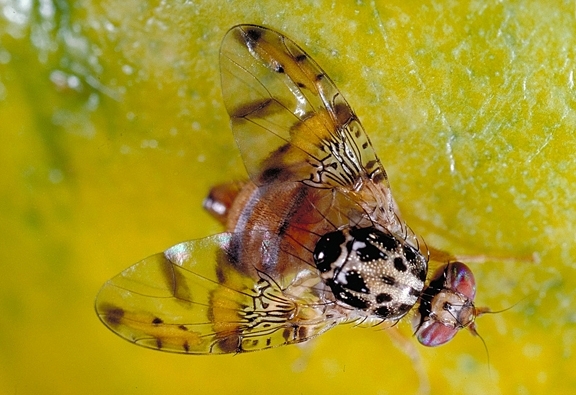- Author: Kathy Keatley Garvey
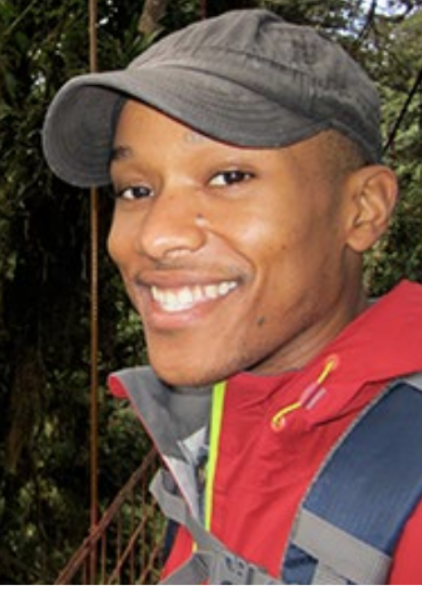
This will be both in-person and Zoom seminar. Ali will speak at 4:10 p.m., Wednesday, April 20 in 122 Briggs Hall. The Zoom link is https://ucdavis.zoom.us/j/
"The talk will broadly be on the behavior and chemical ecology of multi-trophic interactions," Ali says. "This includes plant responses to herbivory, nematode and insect chemical ecology, in agricultural and conservation contexts. Research projects include trophic cascades associated with cover crops, above-below-ground interactions, and the consequences of diet on insect dispersal."
His lab website delves into multi-trophic interactions and chemical ecology.
Ali served as a postdoctoral fellow at Cornell University (2011-2013) in ecology and evolutionary biology before joining Penn State faculty in the spring of 2016. He holds a bachelor's degree in biological sciences (2005) and a master's degree in entomology (2008) from the University of Delaware; and a doctorate in entomology (2011) from the University of Florida.
Ali's most recent publications include:
- Cover Crop Selection Affects Maize Susceptibility to the Fungal Pathogen Fusarium verticillioides, published in Trends in Plant Science.
- Plant Nutrition Influences Resistant Maize Defense Responses to the Fall Armyworm (Spodoptera frugiperda), published in Frontiers in Ecology and Evolution.
- Transcriptomic and Volatile Signatures Associated with Maize Defense against Corn Leaf Aphid, published in BMC Plant Biology.
- Chemical Cues from Entomopathogenic Nematodes Vary Across Three Species with Different Foraging Strategies, Triggering Different Behavioral Responses in Prey and Competitors, published in the Journal of Chemical Ecology.
- Cover Crop Soil Legacies Alter Phytochemistry and Resistance to Fall Armyworm (Lepidoptera: Noctuidae) in Maize, published in Environmental Entomology.
- Herbivore-Induced Plant Volatiles Mediate Behavioral Interactions Between a Leaf-Chewing and a Phloem-Feeding Herbivore, published in Basic and Applied Ecology.
Nematologist Shahid Siddique, assistant professor, UC Davis Department of Entomology and Nematology, is coordinating the spring seminars. For Zoom technical issues, contact him at ssiddique@ucdavis.edu.
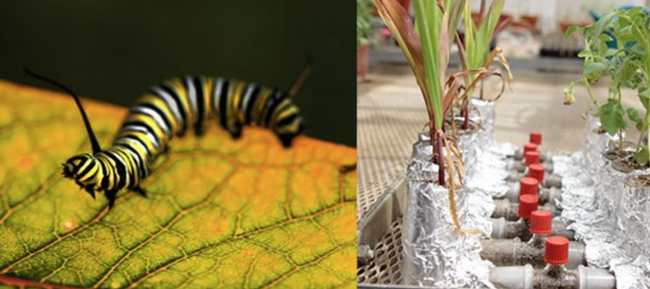
- Author: Kathy Keatley Garvey
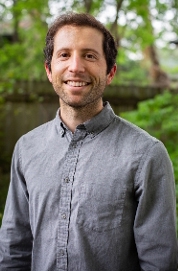
Hammer will speak at 4:10 p.m. in 122 Briggs Hall. The Zoom link:
https://ucdavis.zoom.us/j/99515291076.
Community ecologist Rachel Vannette, associate professor, UC Davis Department of Entomology and Nematology, is hosting the seminar.
"How do insects and microbes form symbioses, and why do these partnerships often break down?" Hammer asks in his abstract. "We are addressing these questions with the gut microbiomes of social corbiculate bees. Despite an ancient association with their bee hosts, these symbionts are surprising dynamic over developmental, ecological and macroevolutionary time scales. I will discuss our recent discoveries of symbiont loss in bees, and efforts to understand why and how these losses occur."
Hammer received his bachelor's degree in general biology from UC San Diego in 2009 and his doctorate in evolutionary biology in 2018 from the University of Colorado, Boulder. He served as a postdoctoral researcher at the University of Texas, Austin, from 2018 to 2021.
Hammer's research interests include microbiomes, symbiosis, microbial ecology and evolution, bees, biodiversity, insect-plant interactions and tropical biology.
"We are a new research group at UC Irvine studying the ecology and evolution of symbioses between hosts (especially bees) and microbes," he writes on his lab website. His mission:
- To boldly venture into uncharted waters of symbiosis and bee biology, asking—and doing our best to answer—new questions about how they tick.
- To create a culture where lab members follow their curiosity, have fun, and regularly enjoy homemade baked goods.
- To contribute to making the academic community better reflect the diversity of society, and be a more welcoming, supportive place for historically marginalized scientists.
- To help wild bees, and connect people outside academia to insect biodiversity.
Hammer's most recent publications include
- Hammer, T.J., Le, E., Martin, A.N., Moran, N.A. 2021. The gut microbiome of bumblebees. Insectes Sociaux 68, 287-301.
- Silva Cerqueira, A.E., Hammer, T.J., Moran, N.A., Cristiano Santana, W., Megumi Kasuya, M.C., Canêdo da Silva, C. 2021. Extinction of anciently associated gut bacterial symbionts in a clade of stingless bees. The ISME Journal 15, 2813-2816.
- Hammer, T.J., Le, E., Moran, N.A. 2021. Thermal niches of specialized gut symbionts: the case of social bees. Proceedings of the Royal Society B 288, 20201480.
- Hammer, T.J., De Clerck-Floate, R., Tooker, J.F., Price, P.W., Miller, D.G., Connor, E.F. 2021. Are bacterial symbionts associated with gall induction in insects? Arthropod-Plant Interactions 15, 1-12.
- Hammer, T.J., Dickerson, J.C., McMillan, W.O., Fierer, N. 2020. Heliconius butterflies host characteristic and phylogenetically structured adult-stage microbiomes. Applied and Environmental Microbiology 86, e02007-20.
Nematologist Shahid Siddique, assistant professor, UC Davis Department of Entomology and Nematology, is coordinating the spring seminars. For Zoom technical issues, contact him at ssiddique@ucdavis.edu.

- Author: Kathy Keatley Garvey
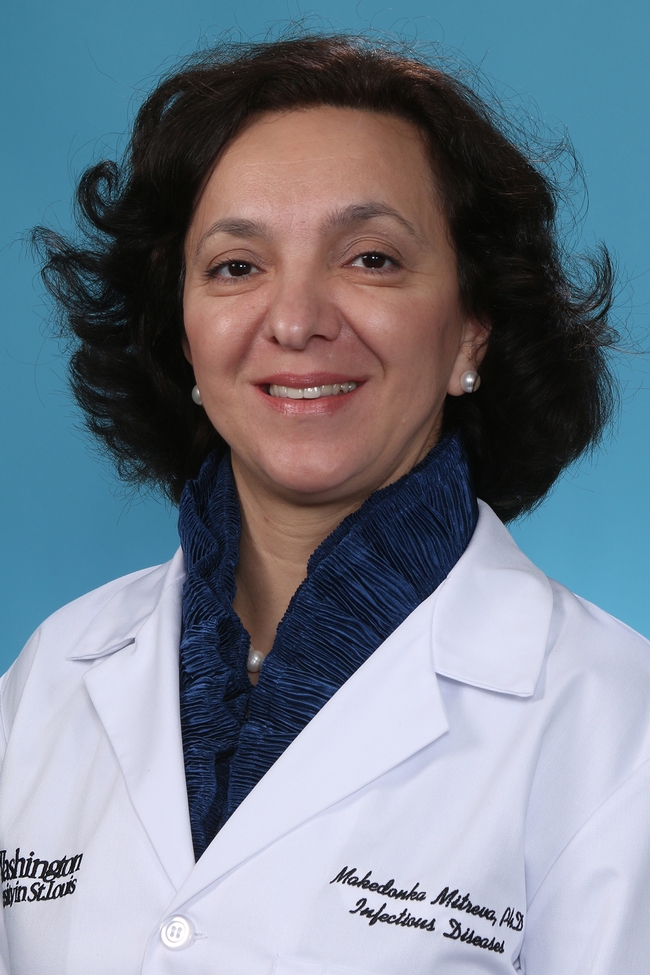
So writes Makedonka Mitreva, professor of medicine and genetics, Division of Infectious Diseases, Washington University School of Medicine, St. Louis, on her website.
She'll speak on "Multi-omics Applications in Helminth Research" at a virtual seminar at 4:10 p.m., Wednesday, April 6 in a seminar hosted by the UC Davis Department of Entomology and Nematology. Nematologist Shahid Siddique, assistant professor, UC Davis Department of Entomology and Nematology will introduce her. The Zoom link:
https://ucdavis.zoom.us/j/99515291076.
"My research takes advantage of next-generation genomic and computational approaches to empower the study of infectious diseases, with a focus on neglected tropical diseases caused byhelminths," Mitreva writes in her abstract. "Overcoming the main obstacle related to scarce understanding of molecular mechanisms involved in host invasion and pathogenesis, required generating comprehensive omics datasets from various helminth species. Interrogating such multi-omics data followed by systems biology approaches provided us with opportunity to greatly advance translational helminth research."
She recently joined the editorial board of Frontiers in Parasitology as section chief editor.
Mitreva says her lab "uses systems biology approaches to provide fundamental molecular information for these parasitic infections of importance to global health. The acquired knowledge accelerates both basic and translational research and provides practical results for global health improvement." Her lab's broad interest in global health improvement, she points out, is reflected in many other collaborative projects, including malaria, tuberculosis and medical metagenomics.
Mitreva holds bachelor and master's degrees in biology, 1990 and 1994, respectively, from Saints Cyril and Methodius University of Skopje, Skopje, Republic of Macedonia. She received her doctorate in plant sciences, molecular and population genetics in 2001 from the Wageningen University and Research Centre, Wageningen, The Netherlands Laboratory of Nematology.
For any technical issues, reach coordinator Shahid Siddique at ssiddique@ucdavis.edu.
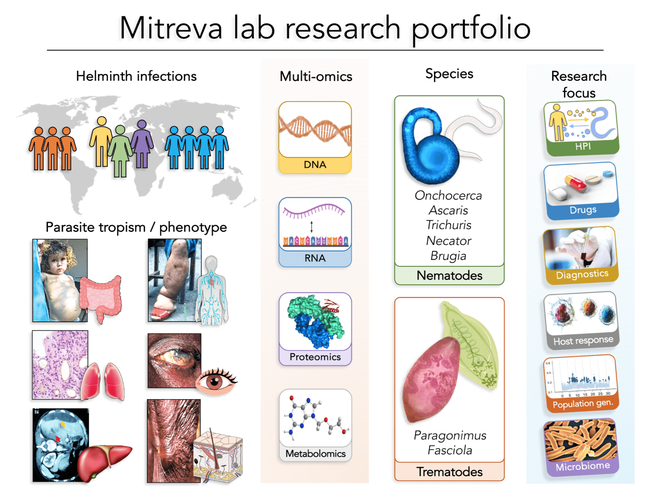
- Author: Kathy Keatley Garvey
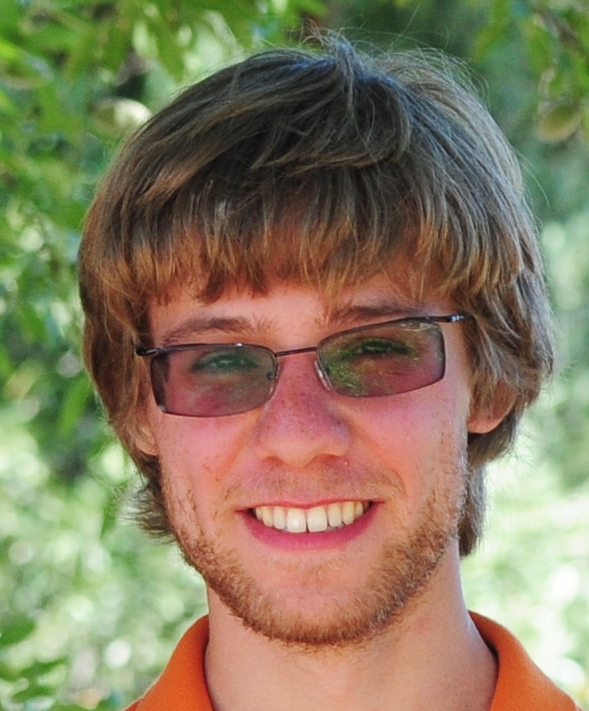
His in-person and Zoom seminar, "Scoliid Wasp Evolution and Some Adventures with Posterior Predictive Simulation," will begin at 4:10 p.m. (Pacific Daylight Time) in 122 Briggs Hall. The Zoom link is https://ucdavis.zoom.us/j/99515291076
Khouri will deliver his seminar in two parts: "The Evolutionary History of Mammoth Wasps (Hymenoptera: Scoliidae)" and "Comparing the Power of Data-Based Phylogenetic Posterior Predictive Checks in the Context of Cucleotide and Amino Acid Data."
"Ziad's work on the mammoth wasps is unique," said host Kimsey, director of the Bohart Museum of Entomology and a distinguished professor of entomology. "This is a family of large bodied distinctive parasitoid wasps that have never had a modern systematic treatment, and the genus and species level taxonomy was a mess. He has brought together modern and classical techniques to bring taxonomic order to this family of wasps and discovered how they evolved."
Some 2300 mammoth wasp specimens, mostly from the Americas, Korea and South Africa, are housed in the Bohart Museum's global collection.
Khouri shares these abstracts from his seminar:
Part 1: "The Evolutionary History of Mammoth Wasps (Hymenoptera: Scoliidae)"
Scoliid wasps comprise a clade of aculeate insects whose larvae are parasitoids of scarabaeid beetle grubs. While scoliids have been studied and used as biological control agents, research into the group's evolution, as well as the stability of scoliid taxonomy, has been limited by a lack of reliable phylogenies. We use ultraconserved element (UCE) data under concatenation and the multispecies coalescent to infer a phylogeny of the Scoliidae. In order to mitigate potential issues arising from model misspecification, we perform data filtering experiments using posterior predictive checks and matched-pairs tests of symmetry. Our analyses confirm the position of Proscolia as sister to all other extant scoliids. We also find strong support for a sister group relationship between the campsomerine genus Colpa and the Scoliini, rendering the Campsomerini non-monophyletic. Campsomerini excluding Colpa (hereafter Campsomerini sensu stricto) is inferred to be monophyletic, with the Australasian genus Trisciloa recovered as sister to the remaining members of the group. Many sampled genera, including Campsomeriella, Dielis, Megascolia, and Scolia are inferred to be non-monophyletic. Analyses incorporating fossil data indicate an Early Cretaceous origin of the crown Scoliidae, with the split between Scoliini + Colpa and Campsomerini s.s. most probably occurring in the Late Cretaceous. Posterior means of Scoliini + Colpa and Campsomerini s.s. crown ages are estimated to be in the Paleogene, though age 95% HPD intervals extend slightly back past the K-Pg boundary, and analyses including fossils of less certain placement result in more posterior mass on older ages. Our estimates of the stem ages of Nearctic scoliid clades are consistent with dispersal across Beringia during the Oligocene or later Eocene. Our study provides a foundation for future research into scoliid wasp evolution and biogeography by being the first to leverage genome-scale data and model-based methods. However, the precision of our dating analyses is constrained by the paucity of well-preserved fossils reliably attributable to the scoliid crown group. Despite concluding that the higher-level taxonomy of the Scoliidae is in dire need of revision, we recommend that taxonomic changes be predicated on datasets that extend the geographic and taxonomic sampling of the current study.
Part II: "Comparing the Power of Data-Based Phylogenetic Posterior Predictive Checks in the Context of Cucleotide and Amino Acid Data"
When used for phylogenetic inference, exonic DNA sequences can be coded in multiple ways, including as nucleotides, amino acids, and codons. In empirical studies, the choice of data type and associated model is often predicated on which model is less expected to be violated in ways that lead to inaccurate inference. Posterior predictive checks are one method for assessing the adequacy of phylogenetic models and potentially providing an indication of inference reliability. We used a simulation-based approach to explore how our ability to detect model inadequacy using phylogenetic posterior prediction, as well as the associated inference errors, may vary with data coding. Specifically, we simulated data under multiple models, including codon models featuring process heterogeneity across lineages, selection heterogeneity across sites, and selection for codon usage. We then performed inference and posterior predictive checks under nucleotide and amino acid models from the GTR family. We found that some simulation conditions resulted in significant differences, between amino acid and nucleotide treatments, in our ability to detect model violation, even when the magnitude of error in an estimate of interest was similar. Moreover, we corroborate the results of other studies indicating that error in tree length estimation is not always correlated with error in topology reconstruction. Although the use of amino acid models generally resulted in more accurate topologies, we found tree length errors to often be greater than for nucleotide models when the data being analyzed were generated using branch-heterogeneous codon models. We show that the magnitude and direction of tree length estimation error can depend on both data coding and properties of the data-generating process. We conclude that if posterior predictive checks are to be used for purposes such as data filtering, practical effect size thresholds indicative of low inference reliability must be established separately for amino acid and nucleotide data. We also advise caution and recommend careful selection of models and data coding when performing analyses where accurate inference of tree length is important.
Khouri joined the UC Davis graduate program in 2012 and is pursuing his doctorate in entomology. His dissertation research involves the phylogenetics, evolution and taxonomy of Scolliidae (Hymenoptera) and phylogenetic posterior prediction.
He holds a bachelor's degree in biology (2012) from Notre Dame University - Louaize (NDU). He did undergraduate research on the identification of bee and other pollinator specimens at the American University of Beirut; assessed genetic diversity in Spartium junceum populations (known as Spanish broom, rush broom, or weaver's broom); and collected specimens for the establishment of an insect collection at NDU.
The Bohart Museum, located in Room 1124 of the Academic Surge Building on Crocker Lane, is currently closed to the public. It houses eight million insect specimens, as well as a live "petting zoo" (Madagascar hissing cockroaches, stick insects and tarantuias) and an insect-themed gift shop, now online.
Nematologist Shahid Siddique, assistant professor, UC Davis Department of Entomology and Nematology, coordinates the seminars. For any Zoom technical issues, contact Siddique at ssiddique@ucdavis.edu. (See list of seminars)
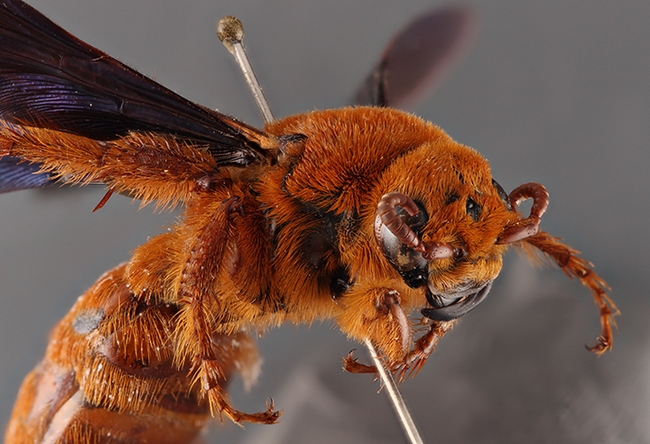
- Author: Kathy Keatley Garvey
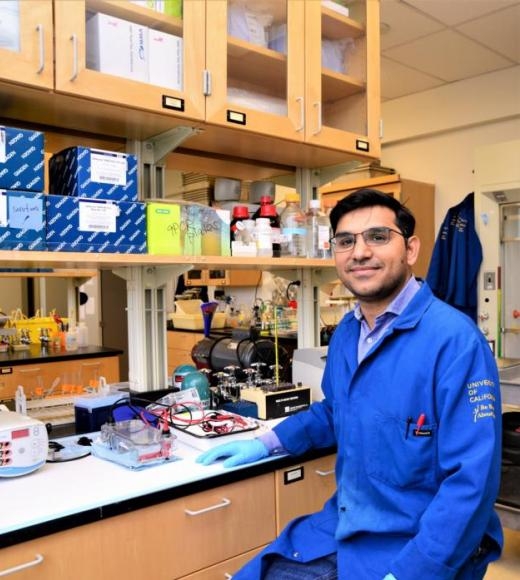
The seminars will take place at 4:10 p.m. on Wednesdays, beginning March 30 and continuing through June 1. The in-person seminars will be in 122 Briggs Hall. In-person seminars also will be presented virtually.
The Zoom link:
https://ucdavis.zoom.us/j/99515291076.
Wednesday, March 30 (in-person and virtual)
Ziad Khouri, international graduate student
Bohart Museum of Entomology, UC Davis Department of Entomology and Nematology
Title: "Scoliid Wasp Evolution and Some Adventures with Posterior Predictive Simulation"
Host: Lynn Kimsey, director of the Bohart Museum of Entomology and UC Davis distinguished professor of entomology
Wednesday, April 6 (virtual)
Makedonka Mitreva, professor of medicine and genetics
Washington University School of Medicine, St. Louis
Title: "Multi-omics Applications in Helminth Research"
Host: Shahid Siddique, assistant professor, UC Davis Department of Entomology and Nematology
Wednesday, April 13 (in-person and virtual)
Tobin Hammer, assistant professor, ecology and evolutionary biology
UC Irvine
Title: “Mystery of the Missing Microbes: Why Do Bees Keep Losing Their Symbionts?”
Host: Rachel Vannette, associate professor, UC Davis Department of Entomology and Nematology
Wednesday, April 20 (in-person and virtual)
Jared Ali, assistant professor of entomology
Pennsylvania State University, State College
Title: "Chemical Ecology of Plant Defense and Multi-trophic Interactions: Bad Bugs, Pungent Parasites and Toxic Travelers"
Host: Richard Karban, professor, UC Davis Department of Entomology and Nematology
Wednesday, April 27 (virtual)
Heather Bruce, postdoctoral researcher
Marine Biological Laboratory, University of California, Berkeley
Title: "Evolution and Development of Arthropod Appendages: Novelty and Homology"
Host: Xavier Zahnle, doctoral student, Jason Bond lab, UC Davis Department of Entomology and Nematology
Wednesday, May 4 (virtual)
Scott McArt, assistant professor of entomology
Cornell University, Ithaca, N.Y.
Title: "Pesticide Risk to Pollinators: What We Know and What We Need to Know Better"
Host: Lexie Nichole Martin, doctoral student, Rachel Vannette lab, UC Davis Department of Entomology and Nematology
Wednesday, May 11 (virtual)
Mostafa Zamanian, assistant professor, Department of Pathobiological Sciences
School of Veterinary Medicine, University of Wisconsin, Madison
Title: "Combing Target and Whole-Organism Paradigms for Anthelmintic Discovery"
Host: Shahid Siddique, assistant professor, UC Davis Department of Entomology and Nematology
Wednesday, May 18 (virtual)
Corlett Wood, assistant professor of biology
University of Pennsylvania, Philadelphia
Title: "The Conflict Beneath your Feet: Indirect Effects in Plant-Symbiont Interactions"
Host: Shahid Siddique, assistant professor, UC Davis Department of Entomology and Nematology
Wednesday, May 25 (in-person and virtual)
James R. Carey, UC Davis distinguished professor
UC Davis Department of Entomology and Nematology
Title: "The Conceptual Sweep of a Mathematical Discovery in Insect Demography: From Estimation of Medfly Population Age Structure to an Historical Analysis of U.S. Congress Incumbency Distributions, 1785-2000”
Host: Shahid Siddique, assistant professor, UC Davis Department of Entomology and Nematology
Wednesday, June 1 (in-person and virtual)
Isgouhi Kaloshian, Divisional Dean, Agricultural and Natural Resources
UC Riverside
Title: "Root-Knot Nematode Perception and Immune Signaling in Arabidopsis"
Host: Shahid Siddique, assistant professor, UC Davis Department of Entomology and Nematology
For any technical issues, reach coordinator Shahid Siddique at ssiddique@ucdavis.edu.
